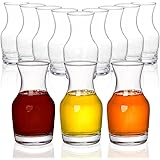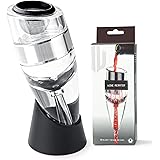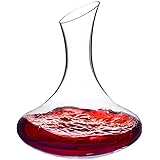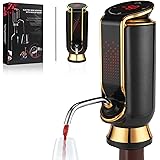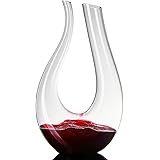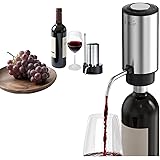Wine and Food Pairing Made Easy: Mastering Flavor Harmony
For many, the world of wine and food pairing can seem daunting, filled with arcane rules and complex terminology. The idea of selecting the perfect bottle to complement a dish often feels like a task reserved for sommeliers, not the everyday home cook. However, as gracefully explained in the video above, demystifying this culinary art is entirely possible when a systematic approach is adopted.
Understanding the fundamental principles behind how flavors interact and how wine functions as an ingredient is crucial. This foundational knowledge allows enthusiasts to move beyond rote memorization of classic pairings and truly innovate in their own kitchens. By exploring the core tastes and wine’s unique attributes, anyone can begin to create truly harmonious food and wine pairing experiences.
The Foundation: Understanding the Five Core Tastes
At the heart of any successful food and wine pairing lies a solid grasp of basic flavor components. There are essentially five fundamental building blocks of taste that are recognized by the human palate: bitter, sweet, salt, fat, and acid. Each of these elements plays a distinct role in a dish, and understanding their individual characteristics is paramount to achieving balance.
1. **Bitter:** This taste is often found in foods like dark chocolate, coffee, kale, and radicchio. Bitterness can be challenging, but it is often balanced by other tastes. For instance, strong bitterness in a dish might be wonderfully complemented by elements of sweetness, fat, or salt to soften its edge.
2. **Sweet:** Naturally present in fruits, honey, and desserts, sweetness is a universally enjoyed taste. It is commonly used to balance acidity or bitterness in food. When pairing wine, a sweet dish typically demands a wine that is at least equally sweet, if not sweeter, to prevent the wine from tasting thin or sour.
3. **Salt:** A fundamental flavor enhancer, salt is used in nearly every savory dish to bring out and intensify other flavors. Foods with higher salt content often make wines taste fruitier and less bitter. It is widely known that salty foods pair exceptionally well with high-acid or sparkling wines, which can cut through the richness and cleanse the palate.
4. **Fat:** Found abundantly in meats, cheeses, and rich sauces, fat provides texture and richness to a dish. This taste sensation often benefits from wines that are high in acidity or tannins, which are known to cut through the richness and provide a refreshing contrast. A dish laden with fat can feel heavy without a wine that offers a suitable counterbalance.
5. **Acid:** Present in citrus, vinegar, and many fruits and vegetables, acidity provides a refreshing, zesty quality to food. High-acid foods are best paired with high-acid wines; otherwise, the wine can taste flat and lifeless. The acidity in wine is highly effective in cutting through fatty dishes, providing a cleansing sensation on the palate.
Beyond these five core tastes, modern culinary understanding has also embraced additional flavor components. Umami, often described as a savory, meaty taste, is found in mushrooms, aged cheeses, and cured meats. Picante, or spiciness, delivers a distinct heat sensation. These additional elements add further layers of complexity to food and wine pairing, allowing for even more nuanced culinary exploration.
Wine as a Culinary Ingredient: Decoding Its Flavor Profile
To truly master food and wine pairing, it is helpful to view wine not just as a beverage, but as another ingredient in the dish. Wine possesses several key attributes that directly influence its interaction with food. These attributes are primarily its acidity, sweetness (or lack thereof), and the presence of tannins.
1. **Acidity:** Fundamentally, wine is an acidic beverage, with its pH typically falling on the lower end of the scale. This natural acidity is what gives many wines their refreshing quality. The presence of acidity in wine makes it an excellent partner for rich, fatty, or salty foods, as it can cut through the richness and cleanse the palate, preparing it for the next bite. Wines with high acidity are frequently chosen to balance the richness of creamy sauces or fried dishes.
2. **Sweetness:** Wines are categorized by their sweetness levels, ranging from bone-dry to lusciously sweet. A dry wine contains very little residual sugar, while a sweet wine, like a dessert wine, can have significant sugar content. The rule of thumb for sweetness in pairing is that the wine should always be at least as sweet, if not sweeter, than the food it accompanies. This prevents the wine from tasting sour or bitter in comparison to the dish.
3. **Tannin:** This attribute is primarily found in red wines, originating from the grape skins, seeds, and stems, as well as from oak aging. Tannins impart a bitter, astringent sensation, often described as a drying feeling in the mouth. These polyphenols are highly effective in interacting with proteins and fats in food. Therefore, tannic red wines are frequently paired with rich, fatty meats, where the tannins bind with the proteins and fats, softening the wine’s astringency and enhancing the meat’s flavor.
Two Paths to Perfection: Congruent vs. Complementary Pairings
When approaching food and wine pairing, two main strategies are commonly employed: congruent and complementary pairings. Each method aims to create harmony, but they achieve it through different means, either by echoing flavors or by creating a satisfying contrast.
A **congruent pairing** is one where the flavors and components of the wine and food are similar, creating a sense of seamless harmony. The aim is to reinforce and amplify shared flavor characteristics, allowing them to meld together beautifully. For example, a zesty Sauvignon Blanc, with its sharp citrusy and herbaceous notes, is often paired with a chilled cucumber soup. In this instance, the wine’s freshness highlights the crispness of the cucumbers, and its acidity complements the soup’s light, often creamy, texture, creating a cohesive flavor profile.
Conversely, a **complementary pairing** involves contrasting flavors and textures to achieve balance. Here, the wine and food play opposite roles, each enhancing the other through juxtaposition. A quintessential example is the classic pairing of a robust Cabernet Sauvignon with a rich, fatty steak. The wine’s pronounced tannins and acidity work to cut through the steak’s abundant fat and savory umami flavors. This creates a refreshing counterpoint, allowing each bite to be as satisfying as the first, as the wine cleanses the palate and prepares it for more of the rich meat.
Your Essential Tool: Navigating a Food and Wine Pairing Chart
While a deep understanding of flavor components and wine attributes empowers you to craft your own pairings, using a well-designed food and wine pairing chart can significantly simplify the process, especially for beginners. Such charts, like the one created for Wine Folly, act as invaluable visual guides, condensing complex information into an easily digestible format.
Typically, these charts are structured to provide clear recommendations. The X-axis often lists various wine styles, perhaps categorized by their body, sweetness, or primary grape variety. The Y-axis, on the other hand, usually features a diverse range of food ingredients, often grouped by type—such as vegetables, meats, cheeses, or spices. By intersecting these axes, recommended pairings are visually indicated, often using dots or other symbols to denote a good match, with larger or bolder symbols highlighting excellent pairings.
To utilize such a chart effectively, the initial step involves identifying the major ingredients and primary flavor profiles of the dish you intend to pair. Once the dominant flavors are recognized, these ingredients can be located on the chart. By following the rows and columns, potential wine partners will be revealed, offering guidance on suitable choices. This structured approach helps in making informed decisions without having to recall every rule from memory.
Putting Theory into Practice: Crafting Your Own Wine Pairings
The true joy of understanding food and wine pairing comes from applying the knowledge in your own kitchen. Let’s consider a practical example, like Madeline’s BLT sandwich scenario, to demonstrate how these principles are applied using a pairing chart. A BLT, seemingly simple, offers a fascinating blend of flavors and textures.
First, the major ingredients of a BLT sandwich on wheat bread must be identified. Bacon contributes significant fat, salt, and umami. The tomato adds acidity and freshness. While lettuce provides texture, it’s not a primary flavor driver. The wheat bread offers a subtle sweetness and earthy undertones. These are the key elements to focus on when seeking a wine partner.
Upon consulting a pairing chart for “bacon,” “tomato,” and “wheat bread,” several wine styles may be indicated. Bacon often pairs well with lighter red wines or even sweet red wines, due to its saltiness and fat. Tomato, with its acidity, frequently finds harmony with medium-bodied red wines or even some sweet wines. Wheat bread, being more neutral, is often compatible with a wider array of wine styles, including sweet white wines. Cross-referencing these individual recommendations often points to common ground.
In this particular case, it might be observed that a sweet white wine, such as an off-dry Riesling, appears as a recurring recommendation for multiple components. The sweetness of the Riesling would beautifully complement the bread’s slight sweetness and the tomato’s acidity, while its inherent acidity would cut through the bacon’s richness. This careful consideration leads to the delightful discovery that an off-dry Riesling is, indeed, an excellent pairing for a BLT sandwich, offering a harmonious balance of flavors.
For those just starting out, it is advisable to begin with simpler dishes that have one or two dominant flavors. Experimentation is key; there is no single “right” answer for every pairing, and personal preference plays a significant role. Focusing on balancing intensity and complementing key tastes will guide you toward successful culinary adventures.
Beyond the Basics: Advanced Pairing Considerations
As comfort with fundamental pairings grows, additional elements can be explored to refine the experience further. The texture of food, for instance, can influence wine choice; a creamy dish might call for a wine with effervescence or high acidity to cleanse the palate. Regional pairings, where food and wine from the same geographical area are often naturally complementary, provide another layer of depth. Ultimately, the most enjoyable pairings are those that resonate personally. By continuing to practice and experiment with different food and wine pairing combinations, confidence in creating truly memorable meals is sure to increase.


